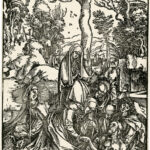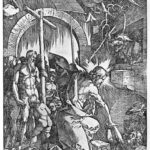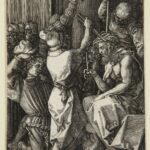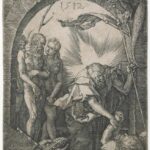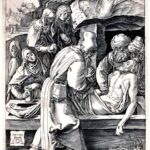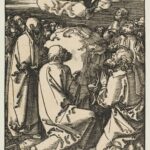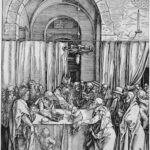In the late 15th and early 16th centuries, Albrecht Dürer’s extensive work in printmaking helped transform the medium into a fine art form. His woodcuts, etchings, engravings, drawings, and paintings focus largely on religious iconography: Major motifs included Adam and Eve and the Horsemen of the Apocalypse, though Dürer incorporated Renaissance-era ideas of perspective, proportion, and mathematics into his compositions. Dürer learned artmaking from his father, who worked in Nuremberg as a goldsmith, then apprenticed under local artist Michael Wolgemut. Dürer is considered one of the greatest artists to emerge from the Renaissance, and his work belongs in the collections of the Metropolitan Museum of Art, the Louvre, the National Gallery in London, the Museo del Prado, and the Uffizi.



